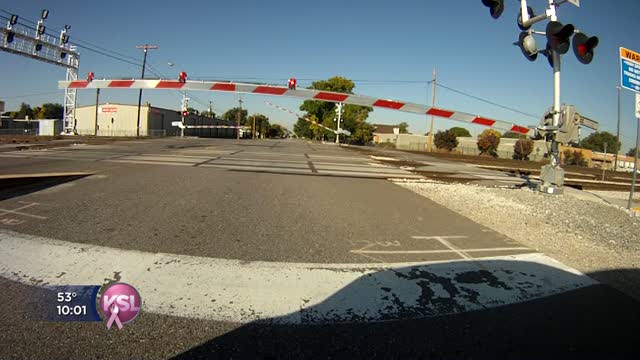Estimated read time: 2-3 minutes
This archived news story is available only for your personal, non-commercial use. Information in the story may be outdated or superseded by additional information. Reading or replaying the story in its archived form does not constitute a republication of the story.
BOUNTIFUL — For all the things Walt Webster has seen in his 37-year career in the railroad business, there are three things he wishes he never witnessed.
“It slowly goes away. I guess it's like losing a loved one. You eventually break down a little bit, but, it keeps recurring," says Webster, who used to work as a train engineer.
He’s talking about crashes he’s been involved in where a person has died.
Every time one happens — like it did this past weekend when three Spanish Fork teenagers were caught between freight trains approaching from opposite directions and killed — it brings back painful memories of six years ago near Wendover.
“This guy must have heard me blowing the whistle, and had been waiting quite a while apparently,” said Webster. “And he just made a bee-line and laid down right in front of the train. And there wasn't anything I could do about it."
The helplessness is the hardest part for train engineers and conductors — that there isn’t anything they can do to avoid a crash.
You're committed. Something like that happens and you just put the train in emergency and by then, you know it's too late.
–Walt Webster
When an engineer sees something on the tracks ahead of him, even if it’s a quarter of a mile away, they know what's going to happen. At 55 miles an hour, a typical freight train travels about 18 football fields before it comes to a stop.
Those last few hopeless seconds seem to tick by slowly.
"You're committed,” said Webster. “Something like that happens and you just put the train in emergency and by then, you know it's too late."
Sometimes the crash could have been avoidable, like when a driver doesn't stop at crossing arms.
Other times it’s a suicide. That happened Monday, when an 86-year-old man walked in front of TRAX commuter train at 4100 South and 300 West. Authorities believe he committed suicide based on witness statements and surveillance video.
In other cases, it’s an accident such as the one in Spanish Fork Canyon.
- Always expect a train at every highway-rail intersection
- Assume that the track is in use, even if there are weeds or the track looks "rusty"
- An approaching train will always be closer and moving faster than you think
- Cross tracks ONLY at designated pedestrian or roadway crossings
- Observe and obey all warning signs and signals
- Never walk down a train track; it's illegal and it's dangerous
- Remember: Rail and recreation do not mix!
Courtesy: Operation Lifesaver
For Webster, though, every time it's a tragedy that makes the train engineer feel guilty.
"That's a question I have to ask myself a lot, why do I feel guilty?” asks Webster, “especially with the guy who committed suicide. That was his choice, but to me, he was still a human being and he still had a mom and he still had a family."
Webster, who lives in Bountiful and is now retired from Union Pacific, is involved with Operation Lifesaver, a group that teaches the public about train safety.
He spends a lot of time at schools in driver education classes, teaching students about trains and safety.
Webster says it's up to us as motorists and pedestrians to be careful near tracks and trains.
"Trains can't swerve and they can't stop,” said Webster, “so it’s up to us to look out for them."
Email: acabrero@ksl.com







